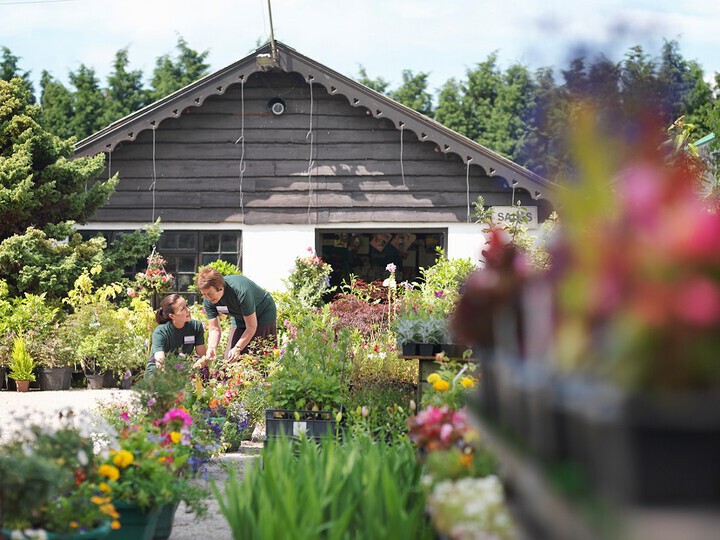Don't leave your home without this list.

It's planting season, which means everyone is filling their days by filing into their local garden centers to pick out colorful flowers and shrubs for their yards. Before you join them, read this list—curated by our experts—on what to look for when perusing your nursery's selection of annuals.
Expect the Best
"Annuals" refer plants that must be planted annually, or every year. Unlike their counterparts, bi-annuals (which have a two-year life cycle) and perennials, which come back year after year, these plants are only viable for one year, so it's important to select the best possible options right off the bat. Ashley Greer, the owner of Atelier Ashley Flowers, says the way to do this is to accept nothing less than perfection from the plant you're eyeing.
Get Hands-On
Carefully inspect your plant for imperfections. "Some things to look for are yellowing or browning leaves, roots coming out of the bottom, or bugs," she says. "If a plant is showing any of these signs, it means it is already under stress and you will have to spend time trying to correct these maladies." So, pick up the pot and poke around. Look at all angles of the plant—not just the front facing the aisle. Peek under leaves and check the stems, and then lift it up to check the roots.
Dig Deep
While Greer doesn't recommend digging into the pot's dirt, you should take a thorough look at it. "A closer look may show things like fungus or bug infestations," she explains. This is critical: You do not want to risk bringing a sick or infested plant back to your home garden, where disease or pests can spread to your other established plants (you could lose an entire bed). If there are any signs of these ailments, put the pot down and look for another option. Jon Roethling, the director of Reynolda Gardens at Wake Forest University, agrees, noting that it's also important to check for soil shrinkage. "If the soil has contracted or appears to have shrunk, this may be an indication that it has been allowed to dry out—and could be an indicator that the plant has been stressed," he says.
Good Signs
Recognizing signs that a plant is healthy is just as important as being able to diagnose a diseased or struggling option. As for some good indicators of health? Look at the leaves—if the plant's leaves are consistent in color and texture, you're good to go. "If a leaf feels turgid or even kind of bouncy to the touch, chances are good that it is healthy," Greer adds. "And if there are no roots coming out of the bottom of the plant and you can see signs of new growth, you have picked a good plant."